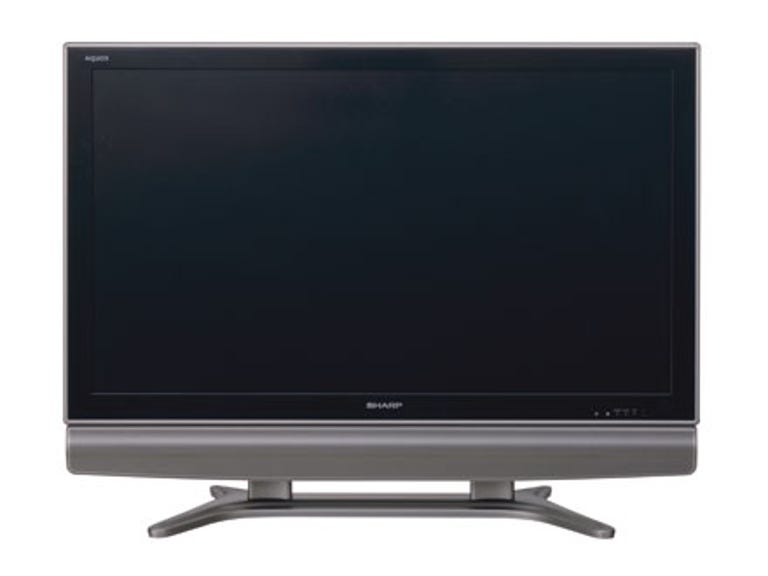 Why You Can Trust CNET
Why You Can Trust CNET Sharp LC46GD7X review: Sharp LC46GD7X
This is an excellent TV which boasts improved styling, great sound and a bright involving picture, but it's AU$700 more expensive than its nearest competitor. With a price reduction this TV could be even more impressive.
Design
The Good
The Bad
The Bottom Line
The detachable speakers are driven by a digital amplifier, and they pump out a very clean and crisp sound. And unlike many TV sets, the sound is clear across the spectrum with a decent amount of bass. No match for a dedicated sound system of course, but very, very good.
Controls for the TV are top-mounted and set behind the bezel, which while not a problem for most TV shelfs could be frustrating if mounted on a wall. There is also no front or side mounted AV inputs, which means you would have to remove the TV every time you plug in something like a camcorder or another device.
The remote handset is quite functional, though not a learning model, and fits well in the hand. The menu system it unlocks is also relatively straightforward.
Features
Also appreciated is the 3.5mm headphones jack on the front. With the older 1/4-inch style plug disappearing from headphones in this iPod age, it's reassuring to know you can unplug your headphones from your portable and straight into the TV without worrying about an adaptor.
As HDMI devices proliferate, there will be more call for HDMI inputs on TV sets. Many TVs only come with one, while the Sharp comes with two. While this is fine for now, in the future it may be necessary to invest in a HDMI-enabled receiver such as the Pioneer ASX2X to work as a video switcher.
Performance
Colours are vivid, and a test disk such as King Kong demonstrates the Sharp's abilities with true reds and deep blues. There is a lack of ghosting or motion blur and images feel solidly palpable.
The onboard digital tuner is excellent, even if the delay between channels can be a little annoying with up to five seconds between each.
At 46 inches though, it's larger than many LCD TVs, and cracks begin to show in the picture. Digital noise, such as MPEG "blocking" artefacts, were quite evident in SD sources -- including the cricket World Cup broadcasts. The effect was somewhat lesser on DVDs and content streamed from a PC. MPEG errors occur when the signal is compressed for standard definition, and when viewed on a smaller screen it isn't as emphatic as on some large screens. On the Sharp, however, the line between each "block" is easily seen and can be quite distracting. But again, this is only a problem with sources of poor quality. One of the pitfalls of such a large screen with such a high resolution, we suppose.
That said, we used it to test the upscaling capabilities of several different receivers and a DVD player, and for this it readily showed the difference in quality between them. There is also a Digital Noise Reduction circuit available which gets rid of some of the blockiness we saw.
And in comparison to smaller TVs in the same range, contrast is a little duller, though the image is still quite bright and crisp.
Only when the lights are off, does the difference between this and a good plasma become apparent. Because this LCD is lit from behind, unlike a plasma such as the Pioneer PDP-427XDA which is lit from within, the blacks aren't as deep when the room is in darkness.
And due to the larger LCD sizes being harder to make, this LCD is priced like the plasma screens of old -- while even the aforementioned Pioneer is available for under five grand.
This is an excellent TV which boasts improved styling, great sound and a bright involving picture, but at AU$7199 it's AU$700 more expensive than the excellent 46" X-series Sony Bravia. With a price reduction this TV could be even more impressive.


